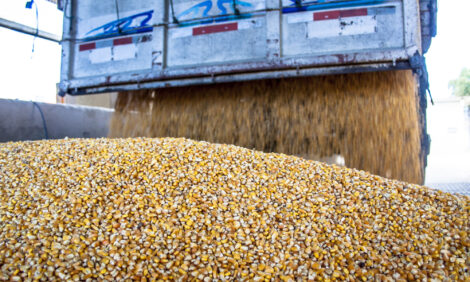



Antibiotic Objectives Being Met
NETHERLANDS - Sales of antibiotics licensed for use in animals have exceeded national policy targets set for 2013 by dropping 51 per cent since. This reduction accounts for a 200 tonne drop from 495 tonnes in 2009 to 244 tonnes in 2012, outline Maram in a report detailing the changes in antibiotic usage from 2004 - 2012.
The trends across sectors over the last five years were broken down in the summary.
- sow/piglet farms showed strong decrease, levelling off slightly in 2012 d
- fattening pig farms: continuous strong decrease d
- broiler farms: strong decrease, levelling off this year d
- veal calf farms: continuous substantial decrease d
- dairy farms: annual variation, strong decrease in 2012.
The objective of this study was to obtain detailed insight into the trends in the exposure of farm animals to
antibiotics. This is done by monitoring both overall sales data at the national level and usage data per
animal species.
All EU member states are required to monitor antimicrobial resistance in food-producing animals of public
health concern (Zoonosis Directive 2003/99/EC). Within this context, monitoring of antibiotic use is equally
important.
Decline of Antibiotics
Tetracyclines
The sales data indicate a total decrease of 61 per cent for Tetracyclines in the period 2009-2012. The underlying
detailed data show a stronger decrease of oxytetracyclines (67 per cent) than of doxycyclines (49 per cent).
Fluoroquinolones
In the first half year of 2012 the quinolones represented 1.3 per cent of the total veterinary antibiotic sales in the
Netherlands; the 'newer' fluoroquinolones represented 0.41 per cent of the total sales (danofloxacin, difloxacin,enrofloxacin and marbofloxacin). In the period 2009-2012 the sales of quinolones decreased by 59 per cent; the
newer fluoroquinolones showed a decrease of 23 per cent.
Cephalosporins
In the first half year of 2012 the cephalosporins represented 0.10 per cent of the total sales. In the period 2009-
2012 the estimated sales of third- and fourth-generation cephalosporins (cefoperazon, cefovecin,
cefquinome, ceftiofur, cefuroxim) showed an enormous decrease of 92 per cent, to 0.03 per cent of the total sales.
A summary of product sales have been provided in the table below.

Use Across Sectors
Sows/Piglets
Based on the first semester, the average use in sows/piglets is estimated to be 10 daily dosages per
year in 2012. In 2009 the use was 25 daily dosages per year.
In 2012 31 per cent of the total antibiotic use in sows/piglets consisted of tetracyclines, 36 per cent of penicillins and
another 17 per cent of trimethoprim/sulfonamides.
Fattening Pigs
Based on the first semester, the average use in fattening pigs is estimated to be less than 6 daily
dosages per year in 2012, of which 90 per cent are orally administered. In
2009 the average use was 16 daily dosages per year.
In 2012, 74 per cent of the total antibiotic use in fattening pigs originated from the administration of
tetracyclines and 10 per cent from macrolides/lincosamides.
An important finding is that since 2009 the use of
macrolides dropped substantially, and that in 2012 both third- and fourth-generation cephalosporins and
fluoroquinolones were no longer applied.
Broilers
The average use in broilers is estimated to be 14 daily dosages per year in
2012, administered orally, mainly through the drinking water. In
2009 the use was 37 daily dosages per year.
In 2012, the administration of penicillines accounted for 38 per cent of the total antibiotic use on broiler farms,
quinolones for 22 per cent, intestinal anti-infectives for 15 per cent and tetracyclines for 8 per cent. The use of intestinal antiinfectives (e.g. orally administered neomycin, colistin) decreased from 7 dd/ay in 2009 to 2 dd/ay in 2012.
Veal Calves
Average use in veal calves is estimated to be 21 daily dosages per
animal year in 2012, of which 88 per cent was orally administered. In 2009
the average use was 30 daily dosages per animal year. The reduction in the period 2009-2012 is almost 30 per cent. The total reduction in 2012 is 37 per cent, compared with the start of the monitoring in veal
calves in 2007. In 2007 the average use was 34 daily dosages per animal year.
In 2012, 49 per cent of the total antibiotic use on the veal calf farms originated from the administration of
tetracyclines, 13 per cent from macrolides/lincosamides, 10 per cent from intestinal anti-infectives (e.g. neomycin,
colistin) and 9 per cent from trimethoprim/sulfonamides.
Dairy Cows
Use in dairy cows is estimated to be 4.2 daily dosages per
year in 2012, including the use in young stock. In 2009 the use
was 5.8 daily dosages per year.
In 2012, 48 per cent of the total antibiotic use on dairy farms originated from the administration of penicillins
and 32 per cent from combinations, which were mainly applications for intramammary treatment.







